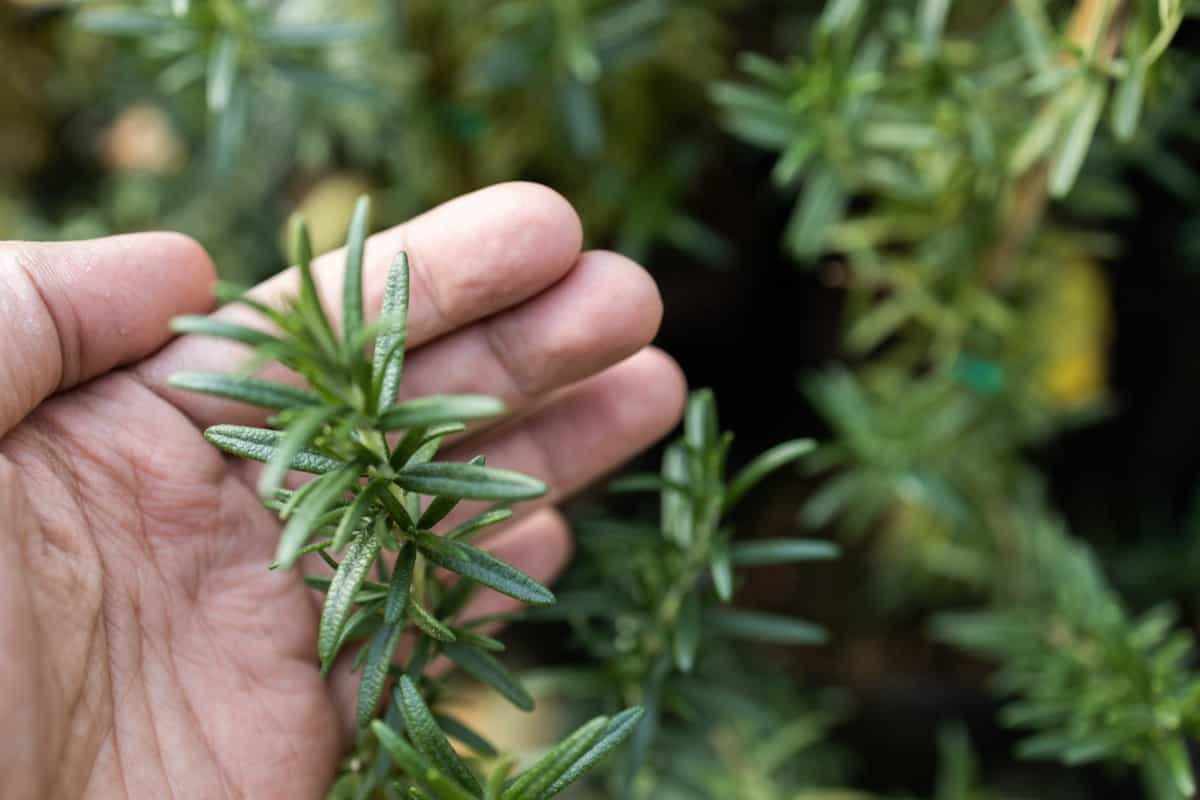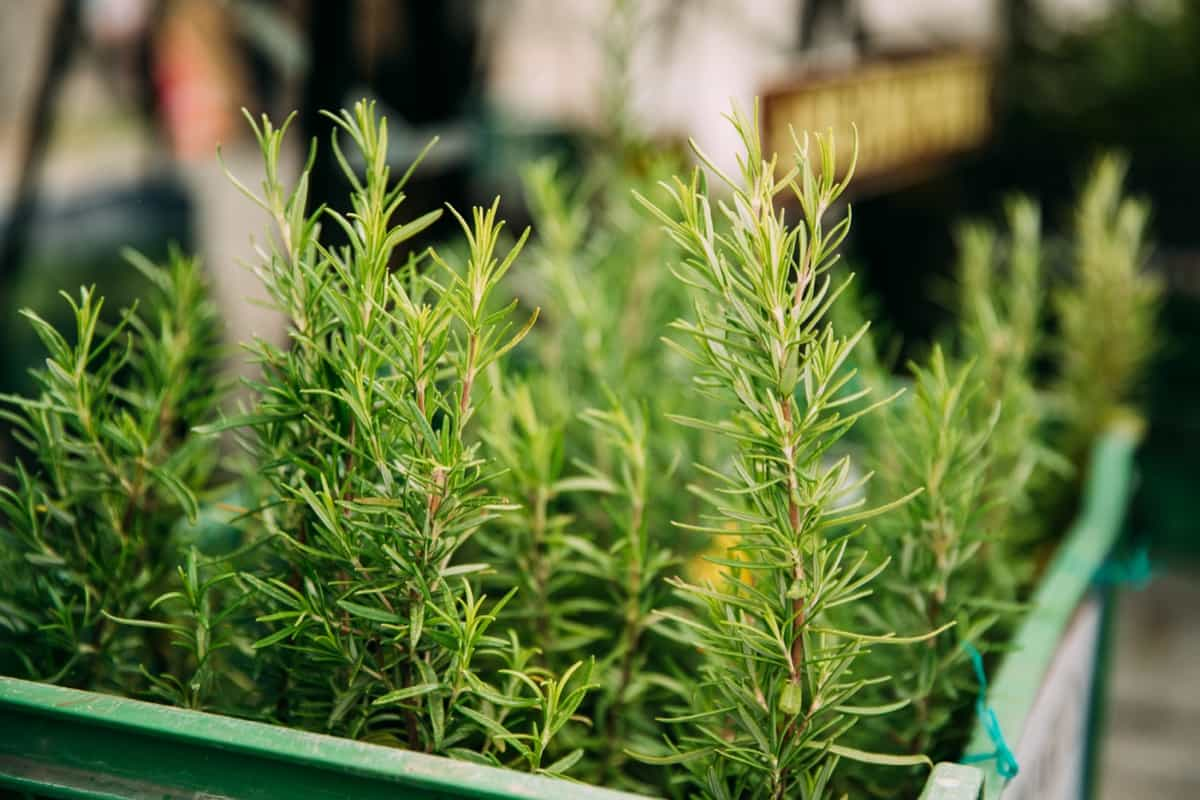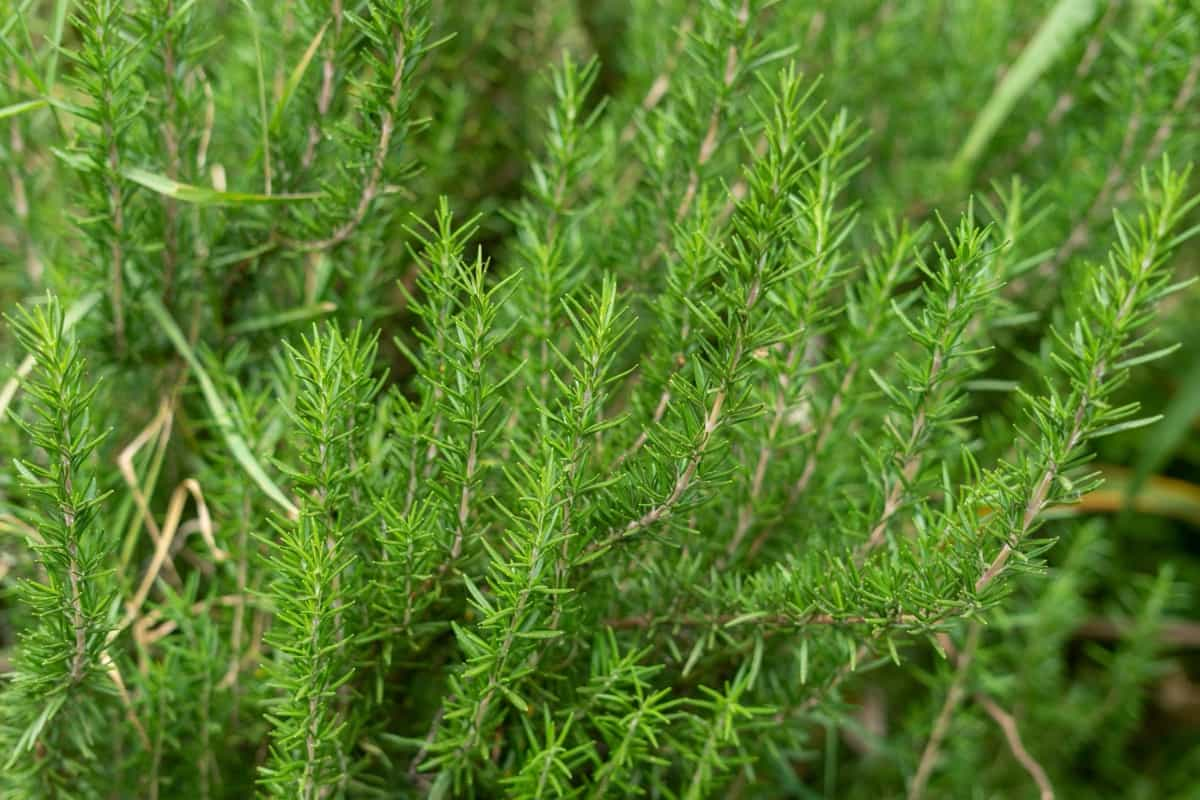Rosemary adds flavor and fragrance to many dishes. Whether you have a small garden or a few pots on your balcony, growing Rosemary can be a rewarding experience. Homemade plant food for Rosemary is a fantastic option for nourishing your Rosemary plants. They provide numerous benefits, such as promoting healthy growth, enhancing nutrient absorption, and boosting overall plant health.

By using common ingredients found in your kitchen or garden, you can easily create these natural fertilizers to ensure the well-being of your beloved Rosemary. Remember to experiment with different recipes and follow Organic Rosemary care tips.
Homemade Fertilizers for Rosemary
Organic Materials-Based Fertilizers
Compost Tea
Compost tea is a nutrient-rich liquid fertilizer made from steeping compost in water. It’s packed with beneficial microorganisms that help improve soil structure and nutrient availability. To make compost tea, you’ll need mature compost and a brewing container or bag. Simply place the compost in the container, add water, let it steep for 24-48 hours, and then strain it before applying it to your Rosemary plants.
Manure Tea
Manure tea is another excellent organic option. It involves soaking aged manure (such as a cow or horse manure) in water to create a nutrient-dense liquid fertilizer. The process is like making compost tea: mix the manure with water in a container or bag and allow it to steep for several days before straining and using it on your Rosemary.
Seaweed Extract
Seaweed extract contains trace minerals, growth hormones, amino acids, vitamins, and enzymes that can benefit plant growth. Applying seaweed extract to your Rosemary can be done by diluting it with water according to the package instructions or making a liquid tea by steeping dried seaweed in water for several days. You can use this mixture as a foliar spray, or you can apply it directly to the soil around your plants.
DIY Nutrient-Rich Compost
Ingredients
Creating your nutrient-rich compost is not only a sustainable practice but also a cost-effective way to nourish your Rosemary plants. To make your homemade compost, you’ll need a combination of green and brown materials. Green materials like kitchen scraps like fruit and vegetable peels, coffee grounds, and grass clippings. Brown materials can be dried leaves, straw or hay, wood chips, or sawdust.
Composting Process
Once you’ve gathered the necessary ingredients, it’s time to start the composting process. Layer the green and brown materials in equal proportions in a designated compost bin or pile. This will help create an ideal balance of nitrogen and carbon that promotes decomposition. It’s important to turn the pile regularly to aerate it and speed up decomposition.
Compost Application
After several weeks or months of decomposition (depending on factors such as temperature and moisture), your compost will transform into dark, crumbly soil-like matter that’s rich in nutrients. Spread compost around the base of your Rosemary plants without burying them.
Vermicompost Fertilizer
Vermicomposting Basics
When it comes to Homemade Rosemary fertilizer solutions, vermicompost is a powerhouse for your plants, including Rosemary. Vermicomposting process includes using worms to break down organic materials into nutrient-rich compost.
Making Vermicompost Tea
To make vermicompost tea, start by collecting mature compost from your worm bin. Take about one cup of this compost and mix it with five gallons of water in a bucket or container. Steep the mixture for 24-48 hours, stirring occasionally. Once you have your vermicompost tea ready, strain out any solid particles and dilute it with water until it looks like weak tea. This liquid gold can be applied directly to the soil around your Rosemary plant or used as a foliar spray.
Applying Vermicompost to Rosemary
Applying vermicompost to Rosemary provides a wide range of benefits. It enhances soil structure, improves moisture retention capabilities, and increases nutrient availability for the plant’s roots. It’s important to note that you don’t need to apply vermicompost too frequently. Once every few months should be sufficient, especially if you have well-established plants.
In case you missed it: Expert Tips to Grow Fuller and Bushier Rosemary

Coffee Grounds Fertilizer
Coffee Grounds Composition
When it comes to Homemade Rosemary fertilizer, coffee grounds are a popular choice among gardeners. Not only can they provide a nutrient-rich boost to your plants, but they also help reduce waste by repurposing used coffee grounds. First and foremost, they are rich in nitrogen, which is essential nutrient for plant growth. Additionally, coffee grounds contain other important minerals like potassium and phosphorus that contribute to overall plant health.
Preparation of Coffee Grounds Fertilizer
To prepare your own coffee grounds fertilizer, collect used coffee grounds from your daily brew. Mix the coffee grounds with water at a ratio of 1 part coffee grounds to 4 parts water. Steep the mixture overnight or for at least 24 hours before straining out any solid particles.
Applying Coffee Grounds to Rosemary
Now that you have your homemade fertilizer ready, it’s time to apply it to your Rosemary plants. Begin by watering the soil around the base of the plant thoroughly. Then, pour the diluted coffee ground solution onto the soil surface while avoiding direct contact with leaves or stems. Aim to apply this Homemade organic fertilizer for Rosemary once every few weeks during active growing seasons for best results.
Epsom Salt Fertilizer
Benefits of Epsom Salt for Rosemary
If you’re looking to give your Rosemary plants a nutrient boost, consider using Epsom salt as a natural fertilizer. One of the main advantages of using Epsom salt on Rosemary is its ability to promote healthy growth. Magnesium plays a crucial role in chlorophyll production, which is essential for photosynthesis. By supplying your plants with an adequate amount of magnesium through Epsom salt, you can ensure that they have enough energy to grow and thrive.
Mixing Epsom Salt Solution
To create an Epsom salt solution for your Rosemary plants, simply dissolve one tablespoon of Epsom salt in one gallon of water. Stir well until the crystals are completely dissolved. You can apply mixture directly to the soil around your Rosemary plants.
Application Frequency and Method
When it comes to frequency and method of application, it’s best to use the Epsom salt solution once every month. Make sure to water your plants thoroughly after applying the solution to help distribute the nutrients evenly throughout the root zone. Remember that while Epsom salts can benefit your Rosemary plants when used correctly, excessive use or misuse can harm them.
Banana Peel Fertilizer
Nutrients in Banana Peels
When it comes to Organic Rosemary fertilizers, banana peels can be an excellent resource right at your fingertips. These seemingly humble fruit remnants are packed with nutrients that can benefit your Rosemary plants in more than one. Let’s talk about the valuable nutrients present in banana peels. It contains potassium, they also contain small amounts of phosphorus and calcium. Additionally, banana peels provide a healthy dose of magnesium and sulfur – two essential elements for plant growth.
Banana Peel Fertilizer Preparation
To prepare banana peel fertilizer, simply collect a few ripe peels and chop them into small pieces. Then, place these pieces in a jar or container filled with water. Let the mixture sit for a week or so until it turns brownish – this indicates that the nutrients have been extracted from the peels.
Applying Banana Peel Solution to Rosemary
Once ready, strain the liquid and dilute it by adding water (usually at a ratio of 1:5). This ensures that you won’t overwhelm your Rosemary plants with too much-concentrated solution. Gently pour the diluted solution around the base of each plant once every two weeks during its active growing season. Make sure not to drench the foliage, as this may lead to rotting or fungal issues.
Eggshell Fertilizer
Calcium Benefits for Rosemary
Eggshells, though often discarded as waste, can actually be incredibly beneficial for your Rosemary plants. One of the key advantages they offer is their high calcium content. Calcium plays a crucial role in plant development and overall health.
In case you missed it: How to Grow Rosemary from Seed to Harvest: Check How this Guide Helps Beginners

Eggshell Fertilizer Preparation
To prepare eggshell fertilizer, start by collecting clean and dry eggshells. Crush them or grind them into a fine powder. This will make it easier for the nutrients to be absorbed by your Rosemary plant’s roots.
Incorporating Eggshells into Soil
Incorporating Eco-friendly Rosemary fertilizers like eggshells into your soil is simple yet effective. You can either sprinkle crushed shells around the base of your Rosemary plants or mix them directly into the soil during planting or transplanting. Over time, as the shells break down, they release calcium slowly, providing a steady supply of this essential nutrient to your Rosemary. By incorporating DIY Rosemary nutrient boosters like eggshell fertilizer into your gardening routine, you are not only utilizing kitchen waste but also ensuring that your Rosemary plants receive adequate calcium for optimal growth and productivity.
Fish Emulsion Fertilizer
Nutrient Content in Fish Emulsion
Fish emulsion fertilizer is a nutrient-rich organic option for feeding your Rosemary plants. It contains essential nutrients that can promote healthy growth and vibrant foliage. The nutrient content in fish emulsions includes nitrogen, phosphorus, and potassium (NPK), as well as trace minerals like calcium, magnesium, and iron. These nutrients are easily absorbed by the roots of the plant, providing immediate nourishment.
Homemade Fish Emulsion Recipe
Making homemade fish emulsion is simple. Start by blending fresh fish scraps with water in a blender or food processor until they form a slurry-like consistency. Strain the mixture, then dilute it with water according to the instructions.
Dilution and Application Techniques
Mix one part fish emulsion with four parts water before applying evenly around the base of the plant. For best results, apply fish emulsion fertilizer every two weeks during the growing season. This regular feeding will help support strong root development and overall plant health. Remember that while fish emulsion is an effective Natural Rosemary fertilizer recipe, it does have a distinct odor that may not be pleasant to some gardeners.
Molasses Fertilizer
Role of Molasses in Soil Health
Molasses, a thick and sweet byproduct of sugar production, maybe the secret ingredient your Rosemary plants need to thrive. Its role in soil health goes beyond its delicious taste. Molasses are rich in essential nutrients like potassium, iron, and calcium that can benefit your plant’s growth.
Making Molasses Fertilizer Solution
To make a molasses fertilizer solution, simply mix one tablespoon of unsulphured molasses with one gallon of water. Stir thoroughly until the molasses dissolves completely. This homemade concoction will provide your Rosemary with an organic boost without harmful chemicals.
Using Molasses Fertilizer for Rosemary
Using molasses fertilizer for Rosemary is easy. Apply the solution to the base of the plant or use it as a foliar spray during the growing season. The natural sugars in molasses help stimulate microbial activity in the soil and improve nutrient uptake for healthier and more vibrant Rosemary plants.
Grass Clipping Fertilizer
Grass Clipping Composition
Grass clippings, a common yard waste material, can actually be repurposed into a beneficial Best homemade Rosemary feed for your Rosemary plants. The composition of grass clippings includes nitrogen, phosphorus, and potassium that are crucial for plant growth and development.
Grass Clipping Tea Preparation
To make grass clipping fertilizer, first, ensure that the grass you have collected has not been treated with any chemicals or pesticides. Next, create a compost tea by soaking the grass clippings in water for several days. This allows the nutrients to leach out into the water and create a nutrient-rich solution.
Application of Grass Clipping Fertilizer to Rosemary
Once the compost tea is ready, strain out the grass clippings and dilute the liquid with water at about a 1:10 ratio. This ensures that it doesn’t become too concentrated and potentially harm your Rosemary plants. When applying the grass clipping fertilizer to your Rosemary plants, use it as a foliar spray or pour it onto the soil around them. Be sure to apply it sparingly to avoid over-fertilizing your plants.
In case you missed it: 15 Gardening Mistakes to Avoid This Fall: For Vegetables, Flowers, Fruits, and Herbs

Conclusion
Incorporating Homemade fertilizers for herbs can not only save you money but also promote a healthier and vibrant plant. Remember always to consider the needs of your Rosemary plant when choosing which homemade fertilizer to use. Whether you opt for nutrient-rich compost tea or opt for the rejuvenating effects of seaweed extract, these DIY Rosemary plant foods offer Sustainable Rosemary fertilization and eco-friendly ways to nourish your plants.
- How to Grow Hibiscus from Flower
- Plantation Ideas for Home Decoration: A Beginners Guide
- Flower Garden Designs and Layouts for Beginners
- Planting and Spacing Techniques in Papaya: A Beginner’s Guide
- Growing Gold: Essential Techniques for Planting Pineapples
- How to Make Kalanchoe Plant Bushy: Home Remedies and Solutions
- 11 Reasons Why Your Gardenia is Not Blooming: Home Remedies and Solutions
- Eco Elegance: The Guide to Designing a Drought-Tolerant Landscape
- Gardening on a Slope: Strategies for Hillside Landscaping